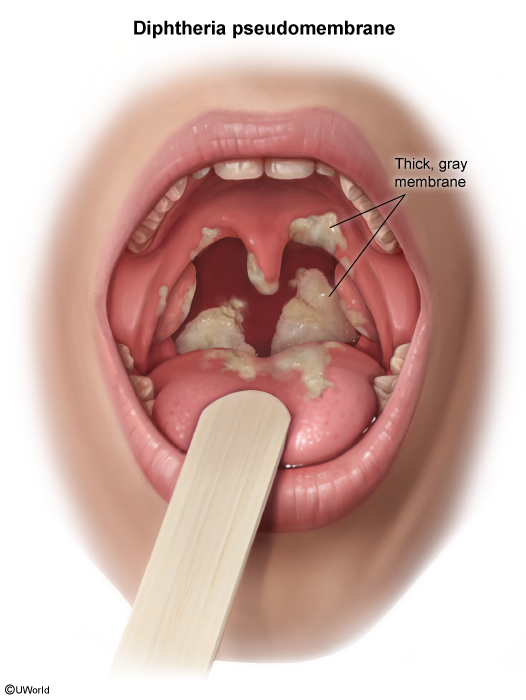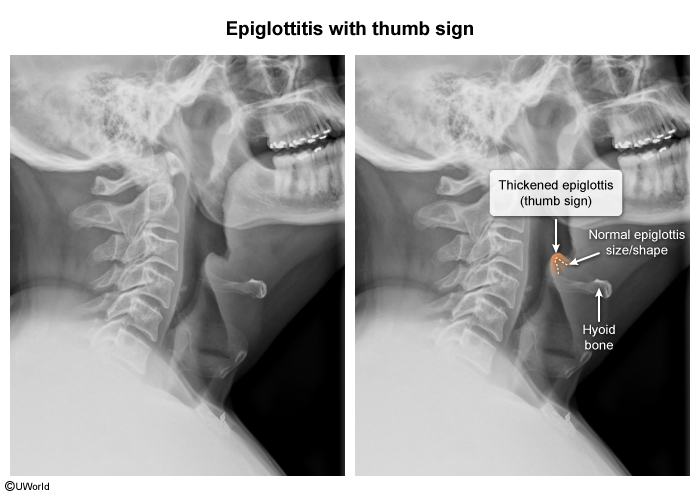Corynebacterium Diphtheriae Infection (Diphtheria)
Article Sections
Introduction
Diphtheria is an infectious disease caused by Corynebacterium diphtheriae, a gram-positive bacillus that is transmitted via aerosolized droplets. C diphtheriae exists in nontoxigenic and toxigenic forms, and the toxigenic form can cause systemic and local symptoms.
Pathogenesis and risk factors
C diphtheriae is a nonmotile, unencapsulated, gram-positive bacillus transmitted via aerosolized droplets (eg, coughing, sneezing). C diphtheriae colonizes the upper respiratory tract, but local invasion is rare. Instead, the primary virulence factor is diphtheria toxin, an exotoxin comprising 2 major subunits:
- B (ie, binding) subunit: Binds the epidermal growth factor receptor for endocytosis of the toxin.
- A (ie, active) subunit: Irreversibly inhibits protein synthesis through ADP ribosylation of elongation factor-2, leading to cell death and the following symptoms:
- Local tissue damage: Pharyngitis, laryngotracheitis.
Continue Learning with UWorld
Get the full Corynebacterium Diphtheriae Infection (Diphtheria) article plus rich visuals, real-world cases, and in-depth insights from medical experts, all available through the UWorld Medical Library.
Figures

Images
